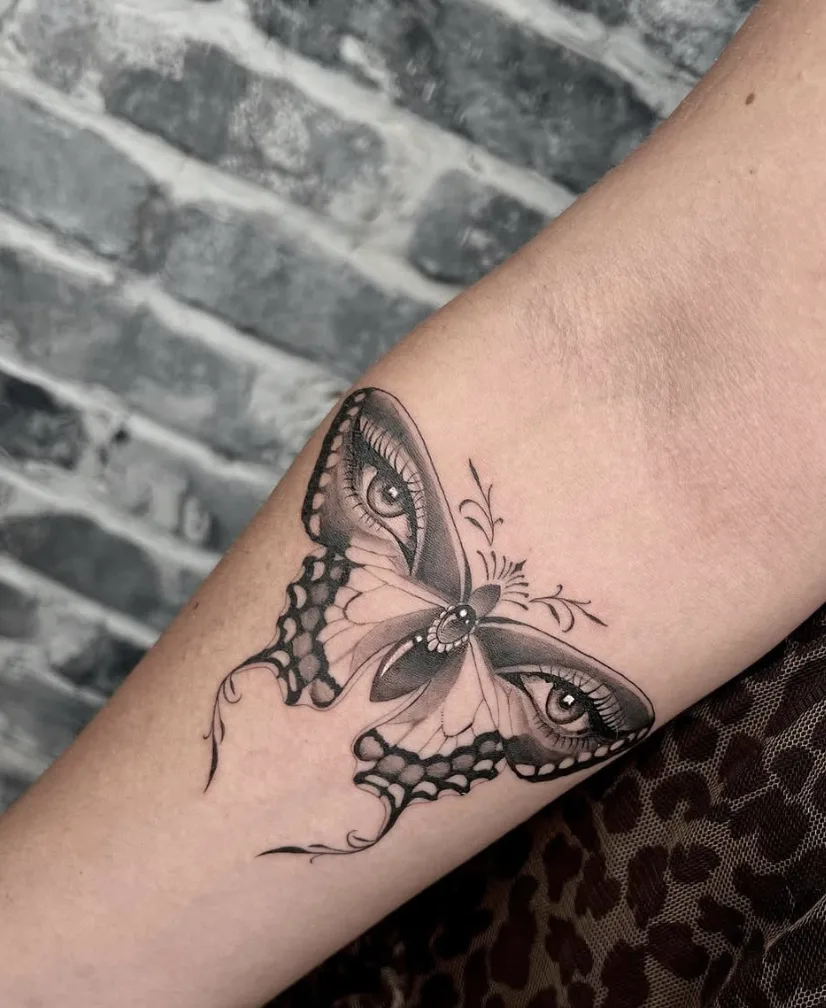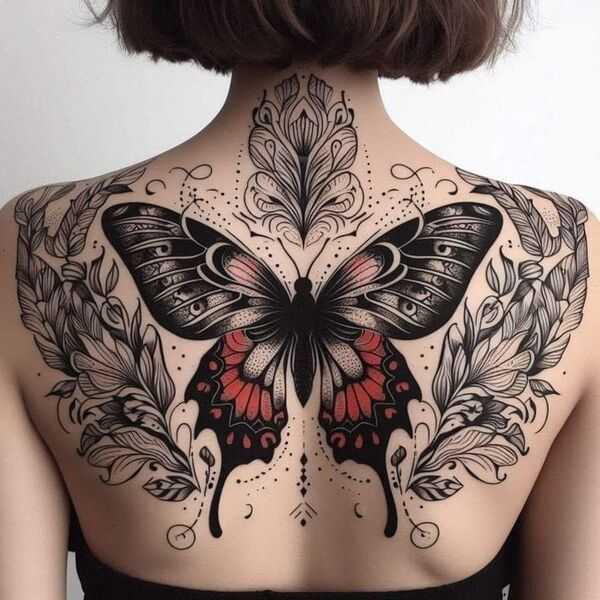31 Stunning Butterfly Tattoo Ideas That’ll Transform Your Body Art Game
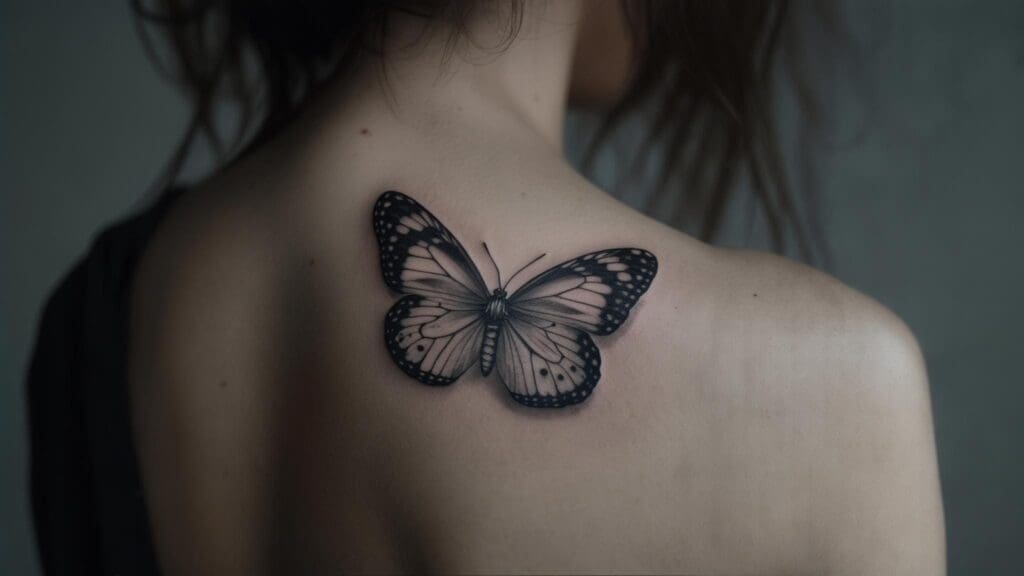
Butterfly tattoos rank among the most requested designs in tattoo parlors worldwide, with their popularity stemming from deep symbolic meaning and incredible versatility. According to Skyrye Design’s comprehensive tattoo research, butterfly tattoos consistently appear in the top 10 most popular tattoo choices among both first-time clients and seasoned collectors. I remember walking into my first tattoo consultation completely overwhelmed by design options until my artist showed me a simple butterfly outline – suddenly everything clicked. The transformation symbolism spoke to my personal journey, and I realized why millions of people choose these winged beauties to mark their most meaningful moments.
Butterfly tattoos represent transformation, freedom, and personal growth, making them deeply meaningful choices for people marking life changes or celebrating personal evolution. The versatility of butterfly designs allows for customization across all skill levels, from simple line work perfect for beginners to complex realistic pieces requiring master-level artistry.
Source: wsimg.com
Table of Contents
- Essential Considerations Before Getting Your Butterfly Tattoo
- Minimalist & Simple Butterfly Tattoo Ideas (Ideas 1-7)
- Realistic & Detailed Butterfly Tattoo Ideas (Ideas 8-13)
- Artistic & Creative Butterfly Tattoo Ideas (Ideas 14-19)
- Symbolic & Meaningful Butterfly Tattoo Ideas (Ideas 20-25)
- Combination & Multi-Element Butterfly Designs (Ideas 26-31)
- How These Designs Measure Against Key Considerations
- Advanced Design Considerations for 2025 Trends
- Long-term Maintenance and Evolution
- Making Your Final Decision
- Final Thoughts
TL;DR
- Size and placement significantly impact your butterfly tattoo’s success – small designs work perfectly on wrists and ankles while complex pieces need larger canvases like backs or thighs
- Artist expertise matters tremendously for butterfly tattoos since they require precise symmetry, detailed wing work, and proper shading techniques
- Color choices affect both immediate impact and long-term maintenance – vibrant colors create stunning effects but need touch-ups every 5-7 years
- Personal meaning should drive your design choice, whether you’re honoring transformation, memorial purposes, or cultural heritage
- Simple designs with bold outlines age better than intricate details that may blur over time
- Budget planning should include both initial tattoo costs and future maintenance expenses for optimal results
Essential Considerations Before Getting Your Butterfly Tattoo
Smart butterfly tattoo planning involves five critical factors that determine your design’s success and longevity. Size and placement work together to showcase your chosen design effectively, while style complexity affects both cost and healing time. Color decisions impact maintenance requirements, and personal symbolism ensures your butterfly tattoo remains meaningful throughout your life. Artist selection becomes crucial since butterfly tattoos demand specific technical skills in symmetry and detail work.
Proper size-to-placement ratios ensure your butterfly design maintains visual impact and detail clarity, with small designs (under 3 inches) working best on wrists, ankles, and behind ears, while complex pieces require 6+ inches for optimal detail retention. Artist portfolio evaluation should focus specifically on butterfly work examples, examining wing symmetry consistency, color saturation techniques, and healed tattoo photos to assess long-term quality and aging patterns.
Understanding tattoo pain levels becomes especially important for butterfly tattoos since placement affects both pain level and healing quality.
| Placement Area | Optimal Size Range | Pain Level (1-10) | Healing Time | Best Design Types |
|---|---|---|---|---|
| Wrist/Ankle | 1-3 inches | 6-7 | 2-3 weeks | Simple outlines, minimalist |
| Forearm/Shoulder | 3-6 inches | 4-5 | 3-4 weeks | Realistic, geometric |
| Back/Thigh | 6+ inches | 3-4 | 4-6 weeks | Complex, photorealistic |
| Ribs/Spine | 4-8 inches | 8-9 | 4-5 weeks | Artistic, flowing designs |
| Behind Ear | 1-2 inches | 7-8 | 2-3 weeks | Tiny, simple outlines |
Source: pinimg.com
Size and Placement Strategy
Your butterfly tattoo’s size directly determines which body areas will showcase it effectively and how much detail the design can include. Small butterfly tattoos excel on delicate areas like wrists, ankles, and behind ears, while medium designs suit shoulders, forearms, and calves perfectly. Large pieces require substantial canvas areas like backs, thighs, or ribs to accommodate intricate wing patterns and realistic shading work.
Body area curvature affects how butterfly wings appear proportionally, with flat surfaces like shoulder blades providing ideal canvases for symmetrical designs, while curved areas like ribs may distort wing shapes unless specifically adapted by skilled artists. Detail retention correlates directly with tattoo size – designs under 2 inches lose fine line work over time, while pieces over 4 inches maintain intricate wing patterns and shading details for decades with proper care.
Sarah initially wanted a detailed monarch butterfly on her wrist but discovered through consultation that the 2-inch space couldn’t accommodate the intricate wing patterns she loved. By moving the design to her shoulder blade and expanding it to 5 inches, she achieved the detailed realism she desired while ensuring the design would age beautifully over decades.
Style and Complexity Decisions
Butterfly tattoo complexity ranges from simple single-line outlines to photorealistic masterpieces requiring multiple sessions. Simple designs offer timeless elegance, faster healing, and lower costs, while complex pieces allow for detailed wing patterns, realistic shading, and artistic flair. Your pain tolerance, budget, and desired visual impact should guide complexity choices, keeping in mind that intricate details may soften over time.
Session length increases exponentially with design complexity – simple outlines typically require 1-2 hours while realistic butterfly pieces may need 6-10 hours across multiple appointments, affecting both cost and physical endurance requirements.
Detail longevity varies significantly between complexity levels, with bold simple designs maintaining crisp appearance for 20+ years while fine detail work may require touch-ups within 5-10 years depending on aftercare and sun exposure. For those considering their first ink, exploring simple tattoo ideas can help determine if a minimalist butterfly design aligns with your comfort level.
Color vs. Black and Gray Choices
Color decisions affect both your butterfly tattoo’s immediate visual impact and long-term maintenance requirements. Colorful butterflies can represent specific species or carry personal meanings through color symbolism, while black and gray designs offer classic sophistication and superior longevity. Skin tone influences how colors appear and age, and colored tattoos typically require touch-ups every 5-7 years to maintain vibrancy.
Color fade rates vary by pigment type and skin tone, with reds and yellows fading fastest (3-5 years), blues and blacks lasting longest (7-10 years), and proper sun protection extending all color longevity by 2-3 years on average. Black and gray tattoos age more predictably than color work, maintaining contrast and definition longer while colored pieces may develop muddy appearance without regular touch-ups, making them higher maintenance investments.
Source: favvosee.com
Minimalist & Simple Butterfly Tattoo Ideas
Source: tatteco.com
1. Single Line Butterfly Outline
This elegant design creates a complete butterfly silhouette using one continuous line without lifting the tattoo needle. The minimalist approach emphasizes graceful curves and wing symmetry while maintaining clean, simple aesthetics. Perfect for first-time tattoo recipients, this design offers quick healing, versatile placement options, and timeless appeal that won’t go out of style.
Single-line technique requires exceptional artist skill to maintain consistent line weight and smooth curves throughout the entire design, with any hesitation or inconsistency becoming immediately visible in the final result. Placement versatility makes this design ideal for small areas like wrists (2-3 inches), ankles (2-4 inches), or behind ears (1-2 inches), with the continuous line creating visual flow that complements natural body contours.
2. Geometric Wing Pattern
Clean geometric shapes form butterfly wings using precise lines, angles, and mathematical patterns. This modern aesthetic combines nature’s organic beauty with structured design elements, creating striking visual contrast. The geometric approach works exceptionally well in small to medium sizes and requires skilled artists who can execute perfect symmetry and clean line work.
Geometric precision demands mathematical accuracy in wing symmetry, with even minor measurement errors creating visually jarring asymmetrical results that cannot be easily corrected without significant rework. Line weight consistency becomes critical in geometric designs since varying thickness destroys the clean, structured aesthetic, requiring artists experienced in technical drawing and precise needle control.
3. Tiny Realistic Monarch
A small, detailed monarch butterfly featuring the species’ signature orange and black wing coloring with white spotted accents. This design balances realistic detail with compact size, making it perfect for visible areas where you want meaningful symbolism without overwhelming presence. The monarch’s transformation symbolism adds deep personal meaning to the visual appeal.
Color saturation in small realistic pieces requires expert technique to prevent bleeding and maintain distinct color boundaries, with orange and black combinations being particularly challenging to execute cleanly in sizes under 3 inches. Detail scaling becomes crucial since monarch wing patterns must remain recognizable even when compressed to tiny dimensions, requiring artists to simplify complex natural patterns while preserving species-identifying characteristics.
4. Watercolor Splash Wings
Delicate butterfly outlines filled with watercolor-effect wing patterns using soft pastels and bleeding color techniques. This trendy style creates dreamy, artistic effects that appear painted directly onto skin. The watercolor approach works best in medium sizes where color blending has space to develop properly, requiring artists experienced in watercolor tattoo techniques.
Watercolor bleeding effects require specific ink application techniques and timing to achieve authentic paint-like appearance, with colors applied while previous layers remain slightly wet to create natural blending patterns. Color maintenance becomes intensive since watercolor effects rely on subtle gradients and soft edges that fade faster than solid color blocks, typically requiring touch-ups every 3-4 years to maintain the dreamy aesthetic.
Source: cuded.com
5. Double Butterfly Silhouettes
Two simple butterfly outlines positioned to create movement and visual balance, often representing duality, partnership, or life stages. This design offers flexibility in size and placement while maintaining symbolic depth. The paired butterflies can be identical or slightly different sizes to represent relationships, personal growth phases, or meaningful connections.
Compositional balance between the two butterflies requires careful spacing and positioning to create harmonious visual flow, with improper placement making one butterfly appear dominant or creating awkward negative space.
Size variation options allow for creative storytelling through scale differences, with larger/smaller combinations representing parent/child relationships, past/present states, or mentor/student dynamics.
6. Dotwork Butterfly
Butterfly design created entirely through stippling technique using individual dots to build shading, texture, and form. This unique approach creates distinctive visual texture and depth while maintaining clean, precise aesthetics. Dotwork requires longer tattoo sessions but produces striking results that stand out from traditional line and shading techniques.
Stippling density variations create shading gradients through dot spacing and size changes, requiring artists to plan dot placement patterns carefully to achieve smooth tonal transitions without creating muddy or inconsistent areas. Session duration extends significantly since each dot requires individual needle placement, with medium-sized dotwork butterflies typically requiring 4-6 hours compared to 2-3 hours for equivalent line work designs.
7. Negative Space Design
Butterfly shape created by tattooing around the design, leaving natural skin tone as the butterfly form while surrounding areas receive ink coverage. This modern, artistic approach creates interesting visual effects and works exceptionally well on flat body surfaces. The technique requires skilled artists who can execute clean, precise outlines.
Outline precision becomes critical since any irregularities in the surrounding tattooed area directly affect the butterfly’s shape definition, requiring steady hand control and careful planning to maintain clean edges. Skin tone considerations affect design visibility, with negative space techniques working best on medium to fair skin tones where contrast between tattooed and natural skin creates sufficient definition for clear butterfly recognition.
Realistic & Detailed Butterfly Tattoo Ideas
Source: instagram.com
8. Photorealistic Blue Morpho
Stunning blue morpho butterfly rendered with photographic accuracy, featuring the species’ characteristic iridescent blue wings and intricate natural patterns. This design showcases spectacular visual impact through expert shading, color work, and attention to anatomical detail. The blue morpho’s natural beauty makes it perfect for clients wanting breathtaking, conversation-starting tattoos.
Iridescent blue effects require advanced color layering techniques using multiple blue tones and strategic highlight placement to simulate the morpho’s natural light-reflecting wing properties, demanding artists with extensive color theory knowledge. Size requirements for photorealistic detail typically start at 6 inches minimum to accommodate the complex wing patterns, vein structures, and subtle color gradients necessary for authentic morpho butterfly representation.
Marcus chose a photorealistic blue morpho for his back piece after researching the species’ symbolism in Costa Rican culture, where he spent a transformative year abroad. The 8-inch design required three sessions totaling 12 hours, but the stunning iridescent effects and anatomical accuracy created a museum-quality piece that perfectly captured his life-changing travel experience.
9. Vintage Scientific Illustration Style
Butterfly design mimicking historical botanical and scientific illustrations, complete with detailed wing patterns, anatomical accuracy, and sometimes Latin species names. This classic aesthetic appeals to nature enthusiasts, educators, and those appreciating vintage scientific artistry. The style works beautifully in both color and black-and-gray applications.
Scientific accuracy requires research into actual butterfly anatomy and wing vein patterns, with artists needing to study entomological references to create authentic illustrations that maintain educational value alongside artistic appeal.
Typography integration for Latin names or scientific notations demands careful font selection and placement planning to complement the illustration without overwhelming the design’s visual balance.
10. 3D Butterfly Landing
Hyper-realistic butterfly design appearing to land directly on the skin, complete with shadow effects and dimensional illusion. This impressive visual trick creates conversation-starting tattoos that showcase master-level artistry. The 3D effect works best on arms, shoulders, or other areas where the illusion can be properly appreciated from multiple viewing angles.
Shadow placement and perspective accuracy create the dimensional illusion, requiring artists to understand light physics and how shadows fall naturally on curved body surfaces to achieve convincing 3D effects. Viewing angle optimization ensures the 3D effect works from the most common perspectives, with artists needing to consider how the tattooed body part moves and positions during daily activities.
11. Butterfly Life Cycle
Complete metamorphosis journey from caterpillar through chrysalis to fully emerged butterfly, telling the transformation story in one comprehensive design. This deeply symbolic piece requires larger canvas areas but offers profound meaning for those celebrating personal growth, recovery, or major life changes. The design can be arranged linearly or in circular patterns.
Compositional flow between life stages requires careful planning to create visual narrative progression while maintaining balanced spacing and proportional relationships between caterpillar, chrysalis, and butterfly elements. Size scaling challenges arise when depicting different life stages proportionally, with artists needing to balance scientific accuracy against visual harmony and available tattoo space constraints.
Source: pinimg.com
12. Realistic Swallowtail
Detailed swallowtail butterfly featuring the species’ characteristic tail extensions and intricate wing patterns. This naturally beautiful design offers moderate to high complexity while remaining achievable for skilled artists. Swallowtails work excellently in both full color and black-and-gray applications, with their distinctive shape creating elegant, recognizable silhouettes.
Tail extension proportions must maintain anatomical accuracy while adapting to body placement constraints, with artists needing to modify natural swallowtail proportions subtly to fit curved or angled body surfaces.
Wing pattern complexity varies significantly between swallowtail species, allowing for customization based on client preferences for detail level and color requirements while maintaining species authenticity.
13. Anatomically Correct Wings
Butterfly design featuring scientifically accurate wing vein patterns, body structure, and proportional relationships. This approach appeals to science enthusiasts, educators, and those appreciating technical accuracy in their body art. The anatomical focus creates educational value while maintaining artistic beauty through precise execution.
Wing vein mapping requires entomological reference materials and understanding of lepidopteran anatomy to create accurate representations that maintain scientific credibility alongside artistic appeal. Proportional accuracy between wing size, body length, and antennae dimensions follows natural butterfly anatomy rules, requiring artists to study actual specimens or high-quality scientific photographs for reference.
Artistic & Creative Butterfly Tattoo Ideas
Source: byrdie.com
14. Mandala Butterfly
Butterfly wings incorporating intricate mandala patterns with spiritual and geometric symbolism. This design combines transformation symbolism with sacred geometry, creating deeply meaningful pieces for spiritually-minded individuals. The mandala elements require exceptional symmetry skills and longer tattoo sessions but produce stunning, meditation-inspiring results.
Mandala symmetry demands mathematical precision in pattern repetition and radial balance, with artists needing to plan geometric layouts carefully to ensure perfect symmetrical alignment across both butterfly wings. Spiritual symbolism integration allows for personalization through specific mandala elements like lotus petals, sacred geometry patterns, or cultural symbols that hold personal meaning for the client.
15. Galaxy Wings
Butterfly wings depicting cosmic scenes with stars, nebulae, and galactic imagery. This unique concept appeals to astronomy enthusiasts and those drawn to celestial themes. The cosmic elements create stunning visual effects through color blending and star field techniques, requiring artists skilled in space-themed artwork and color gradients.
Cosmic color blending requires advanced gradient techniques to simulate nebula effects and star field depth, with artists layering multiple colors to create authentic space-like appearances within wing boundaries.
Star placement and sizing must maintain astronomical accuracy while fitting wing shapes, requiring artists to adapt actual constellation patterns or nebula photographs to butterfly wing contours.
16. Butterfly-Flower Hybrid
Design where butterfly wings transform into or incorporate flower petals, creating seamless nature fusion. This feminine, organic approach combines multiple natural elements while maintaining visual coherence. The hybrid concept works well in various sizes and appeals to those wanting nature-themed tattoos with unique artistic interpretation.
Transition zones between butterfly and flower elements require careful blending to create natural-looking transformations, with artists needing to plan how wing patterns morph into petal structures convincingly. Color harmony between butterfly and flower elements ensures visual unity, requiring artists to select complementary color palettes that work for both natural elements without creating jarring contrasts.
Nature lovers often combine butterfly designs with floral tattoo designs to create cohesive garden-themed pieces that celebrate organic beauty.
17. Tribal Butterfly Fusion
Traditional tribal patterns forming butterfly shapes using bold black lines and cultural design elements. This powerful combination honors tribal heritage while incorporating transformation symbolism. The bold aesthetic works excellently in black ink and appeals to those with tribal connections or appreciation for traditional tattoo styles.
Cultural authenticity requires research into specific tribal art traditions to ensure respectful representation rather than generic “tribal” patterns, with artists needing to understand the cultural significance of chosen design elements.
Line weight consistency in tribal work demands steady hand control and understanding of traditional tribal tattoo techniques, with bold lines requiring confident execution to maintain the style’s powerful visual impact.
18. Steampunk Mechanical Butterfly
Butterfly design incorporating mechanical elements like gears, clockwork, and metal details. This unique concept appeals to steampunk enthusiasts and those appreciating industrial aesthetics. The mechanical elements require detailed work and create fascinating conversation pieces that blend nature with technology themes.
Mechanical detail accuracy requires understanding of actual clockwork and gear mechanisms to create believable steampunk elements that function visually as integrated butterfly anatomy. Metal texture rendering through shading techniques simulates brass, copper, and steel surfaces within the organic butterfly form, requiring artists skilled in both mechanical illustration and realistic texture work.
19. Abstract Expressionist Butterfly
Artistic interpretation using bold colors, brush stroke effects, and abstract elements to suggest butterfly form rather than literal representation. This highly artistic approach creates one-of-a-kind pieces for clients wanting bold, gallery-worthy body art. The abstract style allows for maximum creative freedom and personal interpretation.
Color interaction planning ensures abstract elements work harmoniously while maintaining butterfly recognition, requiring artists to balance artistic freedom with enough representational elements for clear subject identification. Brush stroke simulation through tattoo techniques creates painterly effects on skin, with artists using various needle configurations and ink application methods to mimic traditional painting techniques.
Symbolic & Meaningful Butterfly Tattoo Ideas
Source: skindesigntattoos.com
20. Memorial Butterfly with Dates
Butterfly design incorporating important dates, names, or memorial elements to honor deceased loved ones. This deeply personal approach combines transformation symbolism with remembrance, creating healing tattoos that celebrate life while acknowledging loss. The memorial elements can be integrated subtly or prominently based on personal preference.
Typography integration for dates and names requires careful font selection and placement planning to complement the butterfly design without overwhelming the memorial’s emotional impact.
Symbolic element incorporation allows for personal touches like favorite flowers, meaningful colors, or cultural symbols that represent the honored person’s life and personality.
21. Birth Flower Wings
Butterfly wings created from birth flowers representing family members or personally significant individuals. This highly personalized design combines floral symbolism with transformation themes, creating meaningful family tributes. The birth flower elements can represent children, parents, or other important people in the client’s life.
Floral research ensures accurate birth flower representation for each intended month, with artists needing to study actual flower anatomy and characteristics to create recognizable botanical elements. Compositional balance between multiple flower types within wing shapes requires careful planning to maintain visual harmony while representing each person meaningfully through their birth flower.
22. Semicolon Butterfly
Butterfly design incorporating the semicolon symbol for mental health awareness and suicide prevention advocacy. This powerful combination represents continuation and transformation, making it meaningful for those who have struggled with mental health challenges or want to support awareness efforts. The design can be subtle or prominent based on personal preference.
Semicolon integration requires thoughtful placement within the butterfly design to maintain both symbol recognition and design aesthetics, with the punctuation mark serving as either body element or wing detail.
Mental health symbolism adds layers of meaning beyond transformation, with the semicolon representing the choice to continue one’s story rather than ending it, making placement and execution particularly significant.
Jennifer incorporated a semicolon as the butterfly’s body in her wrist tattoo, creating a powerful reminder of her mental health journey. The subtle integration maintained the design’s beauty while carrying deep personal meaning about choosing to continue her story, inspiring conversations that helped others recognize they weren’t alone in their struggles.
23. Infinity Symbol Body
Butterfly design where the body forms an infinity symbol, representing eternal love, endless possibilities, or infinite potential. This mathematical elegance appeals to couples, those celebrating lasting relationships, or individuals embracing life’s unlimited opportunities. The infinity element can be subtle or prominent within the overall design.
Mathematical precision in infinity symbol proportions ensures the symbol remains recognizable while functioning as believable butterfly anatomy, requiring artists to balance geometric accuracy with organic form. Symbolic meaning customization allows for personal interpretation of infinity concept, whether representing romantic love, family bonds, spiritual beliefs, or personal philosophy about life’s endless possibilities.
24. Phoenix-Butterfly Transformation
Design showing transformation from phoenix flames into butterfly form, representing rebirth and renewal through two powerful transformation symbols. This complex concept requires skilled artists and larger canvas areas but creates profound meaning for those who have overcome significant life challenges or experienced major personal transformations.
Transformation visualization requires careful planning of how phoenix elements morph into butterfly form, with artists needing to create believable transition zones between fire/feather textures and wing patterns.
Symbolic layering combines phoenix rebirth mythology with butterfly metamorphosis, creating double transformation meaning that resonates with clients who have experienced multiple life changes or recovery processes.
25. Cultural Heritage Butterfly
Butterfly design incorporating specific cultural traditions, heritage symbols, or ancestral elements. This approach honors family history while celebrating personal transformation, creating meaningful connections between past and present. The cultural elements require research and respectful representation to maintain authenticity and significance.
Cultural research ensures authentic representation of chosen heritage elements, requiring artists to study traditional art forms, symbols, and their proper usage within the cultural context. Heritage symbol integration must balance cultural accuracy with artistic cohesion, incorporating traditional elements meaningfully without appropriating or misrepresenting cultural significance.
Combination & Multi-Element Butterfly Designs
Source: holisticink.com
26. Three Butterfly Cascade
Flowing arrangement of three butterflies in graduated sizes creating visual movement down arms or legs. This popular design addresses the common “3 butterfly tattoo ideas” search while creating elegant compositions that work excellently for women seeking graceful, flowing designs. The three butterflies can represent past, present, and future or family members.
Compositional flow requires careful spacing and positioning to create natural movement patterns that complement body contours, with each butterfly positioned to guide the eye smoothly through the design sequence. Size graduation planning ensures visual hierarchy while maintaining individual butterfly recognition, typically using 100%, 75%, and 50% scaling ratios for optimal visual balance.
27. Butterfly with Quote Integration
Meaningful text woven through or around butterfly wings, incorporating inspirational phrases, song lyrics, or personal mantras. This combination appeals to literature lovers and those wanting both visual and textual meaning in their tattoos. Font selection and layout planning become crucial for successful text integration.
Typography selection must complement butterfly aesthetics while maintaining text readability, requiring artists to choose fonts that enhance rather than compete with the wing patterns and overall design flow.
Text placement planning ensures quotes remain legible while integrating naturally with butterfly elements, avoiding awkward spacing or text that interferes with wing symmetry and visual balance.
28. Seasonal Butterfly Transitions
Design showing butterflies in different seasonal contexts – spring blooms, summer brightness, autumn leaves, and winter crystalline elements. This complex concept represents life cycles and natural rhythms while requiring large canvas areas for proper execution. The seasonal elements create rich storytelling opportunities through color and environmental details.
Seasonal color coordination requires careful palette planning to represent each season distinctly while maintaining overall design harmony, with artists balancing seasonal accuracy against visual cohesion. Environmental detail integration adds context through seasonal elements like flowers, leaves, or snow, requiring artists to research seasonal butterfly behavior and habitat characteristics for authentic representation.
29. Mother-Daughter Butterfly Pair
Larger and smaller butterfly representing family bonds, often designed as matching or complementary tattoos between family members. This popular choice for butterfly tattoos appeals especially to women celebrating maternal relationships. The design can be identical, mirrored, or complementary based on family preferences.
Scale relationship planning ensures the size difference clearly represents the mother-daughter dynamic while maintaining individual butterfly beauty and recognition in both larger and smaller versions.
Matching design coordination allows for identical tattoos or complementary variations, requiring artists to plan how the designs work both independently and as a connected pair when family members are together.
Family bonding through ink has become increasingly popular, with mother-daughter tattoo ideas offering countless ways to celebrate this special relationship through butterfly symbolism.
30. Butterfly Emerging from Cocoon
Dynamic design capturing the butterfly mid-emergence from its chrysalis, symbolizing personal breakthrough moments and active transformation. This powerful imagery requires skilled shading work and works exceptionally well on curved body areas where the emergence motion can follow natural body contours.
Emergence motion capture requires understanding of actual butterfly emergence process and wing unfurling mechanics to create believable transformation imagery that follows natural biological patterns. Shading complexity increases significantly with cocoon textures and emerging wing details, requiring artists skilled in multiple texture rendering techniques to create convincing chrysalis surfaces and delicate emerging wing membranes.
31. Celtic Knot Butterfly
Traditional Celtic knotwork forming butterfly shapes with interwoven patterns representing eternal cycles and cultural heritage. This design appeals to those with Irish or Celtic ancestry while incorporating transformation symbolism. The intricate knotwork demands expertise in traditional Celtic art patterns and precise line execution.
Celtic knot authenticity requires study of traditional knotwork patterns and their proper construction methods, ensuring the interwoven elements follow historical Celtic art principles rather than generic interlaced designs.
Line precision becomes critical since Celtic knotwork relies on consistent line weights and perfect interlacing patterns, with any irregularities destroying the traditional aesthetic and cultural authenticity.
How These Designs Measure Against Key Considerations
Different butterfly tattoo designs perform better in specific categories, helping you match your personal needs with appropriate design choices. Size and placement compatibility varies dramatically between minimalist outlines and complex realistic pieces. Complexity levels determine both artist skill requirements and session duration, while longevity factors affect long-term appearance and maintenance needs.
Design categorization by practical factors helps clients make informed decisions based on their specific circumstances, pain tolerance, budget constraints, and long-term maintenance preferences. Performance metrics across different categories provide objective comparison tools for evaluating designs against personal priorities and practical limitations.
| Design Category | Best Size Range | Skill Level Required | Longevity Rating | Maintenance Level |
|---|---|---|---|---|
| Minimalist (Ideas 1-7) | 1-4 inches | Beginner-Intermediate | Excellent (20+ years) | Low |
| Realistic (Ideas 8-13) | 6+ inches | Advanced-Master | Good (10-15 years) | Medium-High |
| Artistic (Ideas 14-19) | 4-8 inches | Intermediate-Advanced | Variable (5-20 years) | Medium |
| Symbolic (Ideas 20-25) | 2-6 inches | Intermediate | Good (15+ years) | Low-Medium |
| Combination (Ideas 26-31) | 6+ inches | Advanced | Variable (10-20 years) | Medium |
Size and Placement Performance Analysis
Certain designs excel in small spaces while others require substantial canvas areas for optimal impact. Minimalist designs work perfectly in compact areas, while photorealistic and complex artistic pieces need medium to large spaces. Understanding these requirements prevents disappointing results from poor size-design matching.
Small space champions (Ideas 1, 2, 5, 22) maintain visual impact and detail clarity even when compressed to 2-3 inch dimensions, making them ideal for wrists, ankles, and discrete placement areas. Large canvas requirements (Ideas 8, 11, 14, 19) need 6+ inches minimum to accommodate intricate details, complex color work, and multiple design elements without compromising artistic integrity.
Complexity and Skill Requirements Assessment
Artist skill requirements vary dramatically between design categories, affecting both availability and cost. Beginner-friendly designs offer lower risk and broader artist selection, while master-level pieces require extensive research to find qualified artists. Understanding complexity levels helps set realistic expectations for timeline, cost, and artist selection.
Beginner-friendly options (Ideas 1, 5, 7, 22) can be executed successfully by most professional tattoo artists, offering broader artist selection and typically lower costs due to reduced technical demands.
Master-level requirements (Ideas 8, 10, 15, 18) demand specialized skills in photorealism, 3D effects, or complex artistic techniques, limiting artist options and increasing both cost and session duration significantly.
Longevity and Aging Considerations
Design longevity varies significantly based on line weight, color usage, and detail complexity. Bold, simple designs with strong outlines age beautifully over decades, while intricate details and color-heavy work may require touch-ups within 5-10 years. Understanding aging patterns helps set realistic maintenance expectations.
Aging champions (Ideas 1, 2, 6, 13) feature bold outlines and classic design elements that maintain clarity and visual impact for 20+ years with minimal maintenance requirements. Maintenance-intensive designs (Ideas 4, 8, 15, 19) rely on color vibrancy, fine details, or complex shading that naturally softens over time, requiring periodic touch-ups to maintain original appearance.
Source: redd.it
Advanced Design Considerations for 2025 Trends
Modern butterfly tattoo planning benefits from technological tools, cultural awareness, and skin tone considerations that weren’t available in previous decades. Digital visualization helps clients explore options before committing, while cultural sensitivity ensures respectful design choices. Understanding how different skin tones affect color appearance prevents disappointing results.
Technology integration through AI design tools and digital visualization platforms allows clients to experiment with concepts, colors, and placements before making permanent commitments, reducing regret and improving satisfaction rates. Cultural sensitivity research becomes increasingly important as global awareness grows, requiring artists and clients to understand the cultural significance of design elements to avoid appropriation issues.
Modern tattoo planning increasingly relies on AI tattoo generators to visualize butterfly designs before committing to permanent ink.
Technology Integration Opportunities
Digital tools revolutionize butterfly tattoo planning through AI generators, visualization apps, and design customization platforms. These technologies allow style experimentation, color testing, and size optimization without artist consultation fees. Modern clients increasingly use digital tools to refine their vision before meeting with tattoo artists.
AI design generation enables rapid concept exploration across multiple styles and variations, allowing clients to visualize hundreds of possibilities quickly rather than relying solely on artist sketches or flash designs. Digital color testing helps predict how different color combinations will appear on various skin tones, reducing the risk of disappointing color results and improving client satisfaction with final outcomes.
Cultural Sensitivity and Research Requirements
Incorporating cultural elements into butterfly designs requires thorough research to prevent appropriation and ensure respectful representation. Different cultures assign specific meanings to butterfly symbolism, and traditional design elements carry historical significance that must be understood and honored. Proper research demonstrates respect for cultural heritage.
Cultural symbolism varies significantly between traditions, with butterfly meanings ranging from soul representations in some cultures to seasonal symbols in others, requiring specific research for accurate and respectful incorporation. Traditional design element usage must follow cultural protocols and proper contexts, avoiding generic interpretations that may misrepresent or trivialize important cultural symbols and artistic traditions.
Skin Tone and Color Considerations
Different skin tones dramatically affect how butterfly colors appear and age over time. Fair skin showcases bright colors with dramatic pop but may require more frequent touch-ups, while medium skin tones offer excellent versatility for both bold and subtle palettes. Dark skin creates stunning contrast effects with rich jewel tones and metallics, though all skin tones work universally well with black and gray designs using adapted shading techniques.
Color visibility varies significantly across skin tone spectrum, with warm undertones enhancing reds and oranges while cool undertones make blues and purples more vibrant, requiring customized color selection for optimal results.
Shading technique adaptation becomes essential for darker skin tones, with artists needing to use different contrast ratios and highlight placement strategies to achieve proper depth and dimension in butterfly wing details.
Professional Artist Selection Criteria
Butterfly tattoos demand specific technical skills that not all artists possess equally. Portfolio assessment should focus exclusively on butterfly and nature work, examining wing symmetry consistency, color saturation techniques, and most importantly, healed tattoo photographs. Red flags include unwillingness to show healed work, inability to explain symmetry approaches, or pressure toward flash designs over custom pieces.
Portfolio evaluation criteria should prioritize healed butterfly tattoo examples over fresh work, since immediate post-tattoo appearance differs significantly from long-term results that clients will live with permanently. Consultation quality indicators include detailed discussions of wing symmetry challenges, color longevity expectations, and aftercare specific to butterfly tattoos rather than generic tattoo care instructions.
Source: tattooing101.com
Long-term Maintenance and Evolution
Beautiful butterfly tattoos require ongoing care and occasional maintenance to preserve their original beauty. Understanding aging patterns, touch-up requirements, and sun protection needs helps maintain your investment over decades. Planning for long-term care ensures your butterfly tattoo continues representing your transformation story beautifully throughout your life.
Aging prediction based on design characteristics helps set realistic maintenance expectations, with bold simple designs requiring minimal upkeep while detailed color work needs regular attention to maintain vibrancy. Maintenance scheduling varies by design type and environmental exposure, with most tattoos benefiting from professional assessment every 5-7 years to determine touch-up needs and prevent deterioration.
Understanding tattoo costs helps budget for both initial butterfly tattoo investment and future maintenance expenses over the design’s lifetime.
Aging Gracefully Strategies
Certain design characteristics age better than others, maintaining visual impact and clarity for decades with minimal maintenance. Bold outlines, solid color blocks, and classic designs resist fading and blurring better than fine details and gradient work. Understanding these factors helps choose designs that will look beautiful throughout your lifetime.
Design longevity correlates with line weight and contrast levels, with bold outlines (2mm+) and high contrast elements maintaining definition significantly longer than fine lines and subtle gradients. Color stability varies by pigment type and application technique, with solid color blocks aging more predictably than watercolor effects or complex color blending that may develop muddy appearance over time.
Touch-up Planning and Budgeting
Factor touch-up costs and timing into your butterfly tattoo decision to avoid future financial surprises. Color work typically needs refreshing every 5-7 years, while fine details may blur and require resharpening. Quality initial work reduces future maintenance needs, making artist selection crucial for long-term satisfaction.
Touch-up frequency depends on multiple factors including sun exposure, skin type, tattoo location, and original work quality, with protected areas requiring less maintenance than frequently exposed locations.
Cost planning should include 20-30% of original tattoo cost every 5-7 years for color touch-ups, with black and gray work requiring less frequent and less expensive maintenance sessions.
| Design Type | Touch-up Frequency | Average Cost | Sun Protection Critical | Expected Lifespan |
|---|---|---|---|---|
| Simple Black Lines | 10-15 years | $100-200 | Moderate | 20+ years |
| Black & Gray Shading | 8-12 years | $150-300 | High | 15-20 years |
| Color Work | 5-7 years | $200-400 | Critical | 10-15 years |
| Watercolor Effects | 3-5 years | $250-500 | Critical | 8-12 years |
| Fine Detail Work | 5-8 years | $150-350 | High | 10-15 years |
Making Your Final Decision
Use a systematic decision framework to choose your perfect butterfly tattoo design. Consider lifestyle compatibility, pain tolerance, budget reality, artist availability, and personal readiness before committing to permanent ink. Testing strategies help ensure satisfaction with your choice before making the permanent commitment.
Decision frameworks provide objective evaluation criteria that help balance emotional attachment to designs against practical considerations. Test run strategies using temporary tattoos or digital visualization reduce regret rates significantly by allowing clients to experience their chosen design before permanent commitment.
Decision Framework Implementation
Systematic evaluation helps balance emotional design preferences against practical considerations. Assess lifestyle compatibility, pain tolerance, budget constraints, artist availability, and personal readiness using objective criteria. This framework prevents impulsive decisions and ensures your butterfly tattoo choice aligns with your long-term goals and circumstances.
Lifestyle compatibility assessment considers professional requirements, activity levels, and social contexts that might affect tattoo visibility and acceptance in your specific circumstances. Budget reality includes initial costs and long-term maintenance expenses, with total lifetime costs potentially reaching 150-200% of original tattoo price for color work requiring regular touch-ups.
Test Run Strategies
Testing your butterfly tattoo choice before permanent commitment reduces regret and increases satisfaction. Temporary tattoos, digital visualization, and printed designs help you experience your chosen design’s daily reality. Living with test versions for several weeks reveals practical considerations you might not anticipate initially.
Temporary tattoo testing reveals practical issues including clothing interference, professional visibility concerns, and daily maintenance requirements that aren’t apparent during initial design selection.
Extended testing periods (2-4 weeks) allow the initial excitement to settle, helping distinguish between temporary enthusiasm and lasting satisfaction with the chosen design.
Source: tiktok.com
Transform Your Vision with Tattoo Generator IQ
Choosing the perfect butterfly tattoo from 31+ stunning options can feel overwhelming, especially when considering size, placement, style, and personal meaning simultaneously. Tattoo Generator IQ’s AI-powered platform eliminates this decision paralysis by generating professional-quality butterfly tattoo concepts tailored to your specific vision, placement, and style preferences in seconds rather than months of consultation.
AI-powered design generation addresses the common problem of struggling to communicate design vision to artists, providing high-resolution visual references that clearly convey your butterfly tattoo concept with professional precision. Customization capabilities allow integration of personal elements including memorial dates, birth flowers, cultural symbols, or meaningful quotes into butterfly designs, ensuring your tattoo tells your unique transformation story.
Final Thoughts
Your butterfly tattoo journey represents more than selecting beautiful body art – it’s about finding a visual symbol that honors your personal transformation story. Whether you’re drawn to the elegant simplicity of a single-line outline or the breathtaking complexity of a photorealistic blue morpho, the perfect design exists within these 31 stunning options.
Remember that the most meaningful butterfly tattoos are those that resonate with your individual experience and growth. Take time to consider immediate visual appeal and how your chosen design will continue representing your story as you evolve throughout life. The transformation symbolism that makes butterfly tattoos so powerful should reflect your own journey of change, growth, and beautiful emergence.
Personal resonance with chosen butterfly design ensures long-term satisfaction and meaningful connection to your tattoo, making the permanent commitment worthwhile as a lasting symbol of your transformation journey. Future-focused decision making considers how your butterfly tattoo will age and evolve with you, ensuring the design choice remains meaningful and visually appealing throughout decades of life changes and personal growth.
For women seeking additional inspiration beyond butterfly designs, exploring tattoo ideas for women reveals complementary designs that pair beautifully with butterfly symbolism.
Keywords to Include:
- butterfly tattoo ideas
- butterfly tattoos
- butterfly tattoo designs
- 3 butterfly tattoo ideas
- butterfly tattoo ideas for women
- small butterfly tattoo
- realistic butterfly tattoo
- minimalist butterfly tattoo
- butterfly tattoo meaning
- butterfly tattoo placement
Content Summary:
This comprehensive guide presents 31 stunning butterfly tattoo ideas organized by style categories (minimalist, realistic, artistic, symbolic, and combination designs). The article covers essential planning considerations including size, placement, artist selection, and long-term maintenance. Each design includes detailed descriptions of technical requirements, symbolism, and practical considerations. The guide also addresses modern trends, cultural sensitivity, and provides decision-making frameworks to help readers choose their perfect butterfly tattoo design.
Technical Talking Points:
- Size and placement optimization for different butterfly tattoo styles
- Artist skill requirements ranging from beginner to master level
- Longevity factors affecting tattoo aging and maintenance needs
- Color vs. black and gray considerations for different skin tones
- Touch-up scheduling and cost planning for long-term maintenance
- Cultural sensitivity research for heritage-inspired designs
- Technology integration through AI design tools and visualization
- Professional artist selection criteria specific to butterfly tattoos
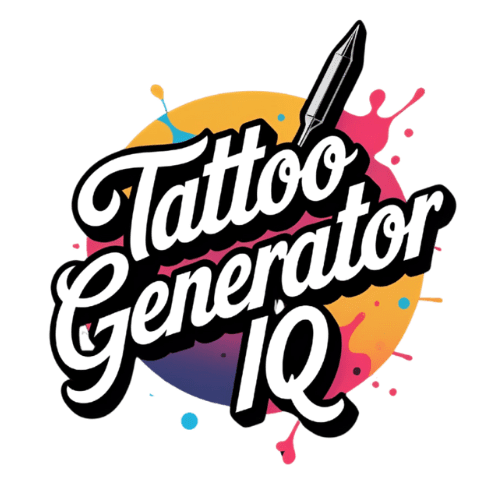
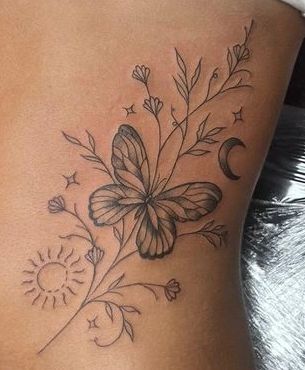


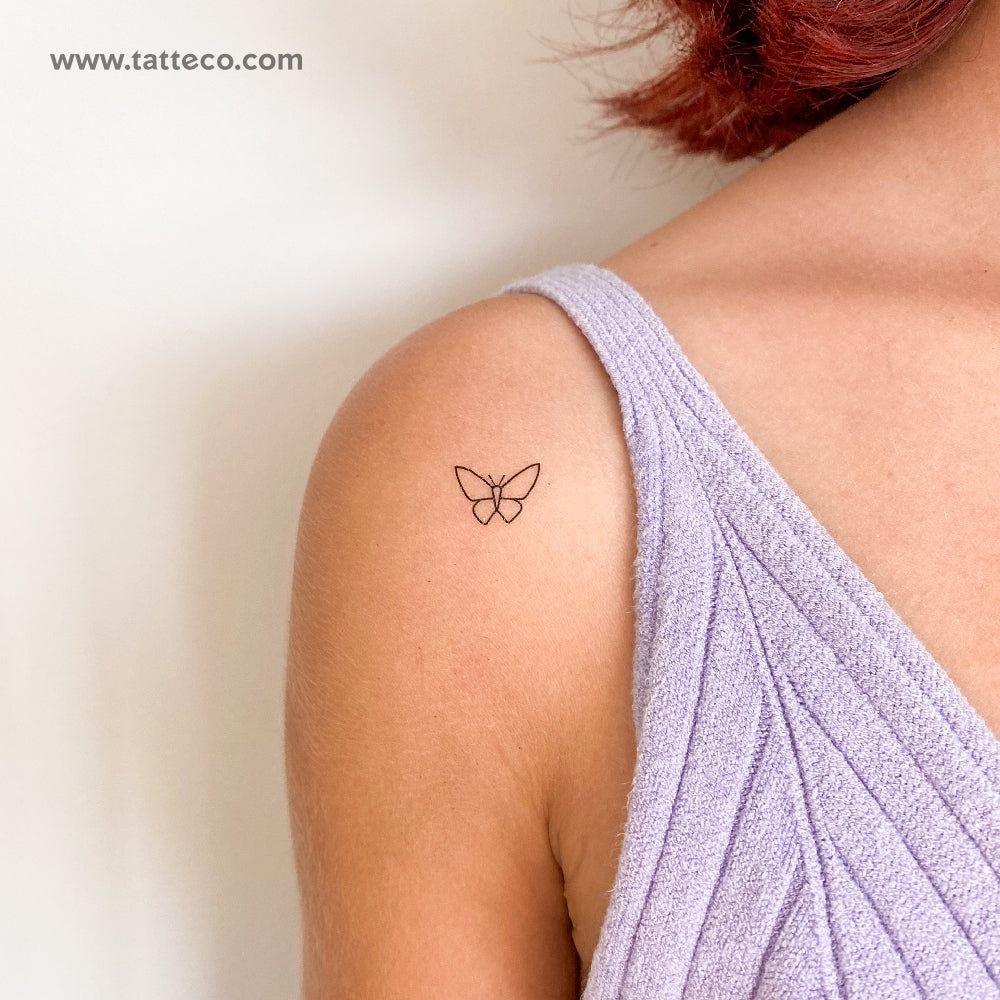
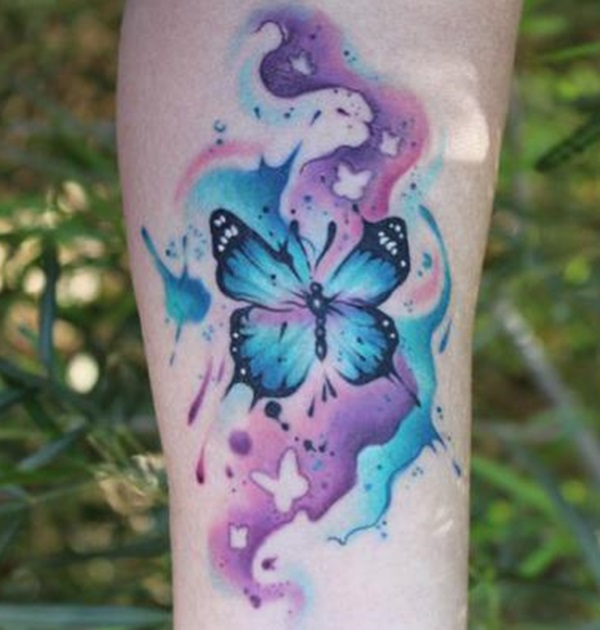


:max_bytes(150000):strip_icc()/butterflytatsocial-6ea0b9b565de46528ddec8ff4a34c665.png)
